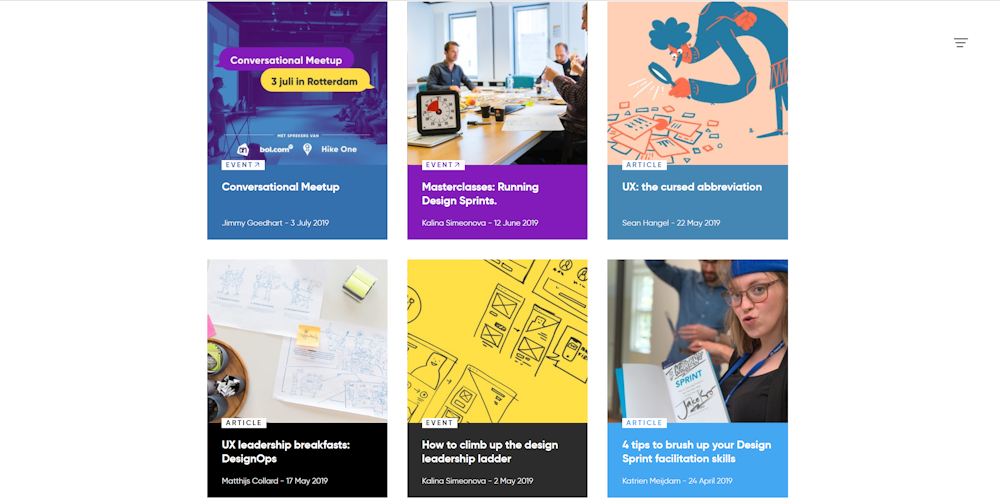Content Marketing tips
Content marketing: It's all about emotions
A good content marketing strategy can help you sell your products easier, sure, but also reinforce your company culture and ethics. Good content can transform a motivational motto like “Just Do It” into a payoff that sells millions of shoes. Good content can promote a beer with a wheelchair basketball game that first evokes empathy and then awes with its final, wholesome twist. What is the thing in common between those two examples? They generate profound, instantaneous emotional reactions, so, the first of our content marketing tips can only be: Emotions are - and always will be - the best commercial hooks.
How do you elicit an emotional response from your users?
According to neuroscientist Antonio Damato: “We are not thinking machines. We are feeling machines that think.” It means that emotions drive the choices we make in everyday life and are only partly tempered by reason. It makes complete sense, in my opinion. Triggering emotions is not a difficult task per se; what is complicated is to trigger the right emotional response, the one that makes us stand out from the competition. One of the most natural methods is to let images and videos speak, leaving the words to be only the frame of a visual masterpiece. Just look at the example of Nike with its latest “Just Do It” campaign built with DatoCMS: words are just a brief introduction for a message that strikes you with artfully edited professional photographs and videos. It’s not about athletic shoes or clothing, but dreams and social redemption.
With online projects increasingly becoming cross-platform and cross-device only, producing high-quality images and videos which are also scalable and adaptable in real time is a source of headache both for web developers and editors. Sometimes you feel forced to compromise on quality to ensure a decent browsing experience on all devices. Luckily enough, JAMstack architecture solves this problem with excellent tools for providing top quality visual content on all devices. DatoCMS offers an Imgix integration out of the box, giving you the ability to transform and optimize your entire image library for fast websites and apps using simple and robust URL parameters.
Let customers tell their story
User Generated Content (or UGC), both written and visual, can be the best storytelling resource at your disposal. From reviews to videos posted on social media, the UGC resonates in users like nothing else. Don’t be afraid to explicitly ask your users to share their stories, even just with your hashtag in the footer; a quick content marketing tip, people like to feel listened by a brand they put their trust in. Shares and RTs of the best UGCs are good, but you should think about some form of seamless integration in your website; an “Instagram wall” for example could give you plenty of content and a helpful “social proof” boost. Even a couple of relevant Tweets peppered in a blog post can be good enough!
If you sell something reviewable, pay attention to your online brand reputation; you should be ready to reply and share the more interesting insights of your clients. Sometimes even negative feedback can tell a compelling story about your product. For example, the Snowbird Ski Resort in Utah published a negative review in its brochure because it reflects its core offering even better than the glowing ones.

Outsource Content… in your own company
To create valuable content on specific topics, you have to rely on professional that know the subject, not on marketing managers or editors. If you need to promote a chain of luxury cocktail bars, for example, you could rely on your bartenders to provide you with quality content. Nobody is interested in knowing the mixology advices of a marketing expert. Content marketing managers must make themselves available to those who have an intimate knowledge of the subject and help them bring out their voice. You could ask the bartenders what patrons order the most, what is fashionable to drink, what are the city trends when it comes to alcohol. Only if you are an insider, you can create exciting and genuine content for your users. You can do this too: get your team involved and choose together the future topics of your content. An open table between different business functions could bring out interesting trends or issues to write about. Involving everyone but being forced to work in a few can be unpleasant; for this reason, DatoCMS allows you to create many different roles with granular authorities and limits. Hike One used multiple Author and Roles to the fullest for their Update page to share knowledge and UX tricks from true insiders.

Find (or rediscover) your Core Values
All content shared online must be inspired by your core values, helping you to choose a distinct voice to follow throughout online communication. If you don’t know how to do it (or your actual core values for the matter), you will risk creating content that clashes with the brand, thus ruining your content marketing strategy. In this case, the company will give a confused, inconsistent, and uninspired image of itself. To establish your style, you should analyze the composition of your target clientele: casuals, pros, young people, the elderly, etc. As long as these are just numbers, it’s hard to know whom we should address, in any case. That’s why we have to create “personas.” Each of these Persona is a fictional character, but with a real profile. They have a name and a surname, an age, children, a career, a particular way of dressing, different preferences, and buying habits. Here is another content marketing tip, whenever you need to create content, you have to ask yourself: what would they share? What would you order for dinner? Where would they go shopping? Try to invent one or more personas to inspire you: it doesn’t take much, just think of some of your most frequent customers, helping you with reviews, analytics and shopping experiences retrieved from forums and blogs. After that you just need to talk about your core values to them, inspire them and move them in your own, personal way.
Content marketing tips - conclusion
Give a human face to the business; Potential customers want to see who they are dealing with during all phases of the product’s life, so talking about the staff helps provide a more human quality to your business. Not only does it increase trust in the brand, but it also allows you to positively empower the team, giving them a chance to shine and express itself beyond the limited scope of an about page or live chat.


